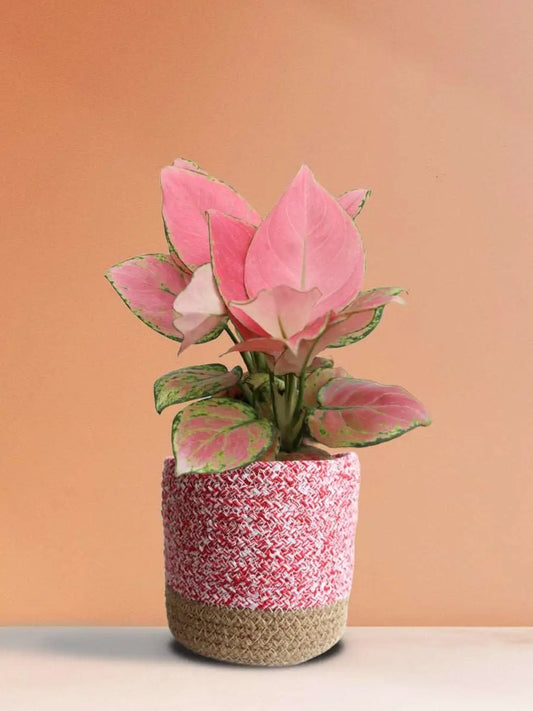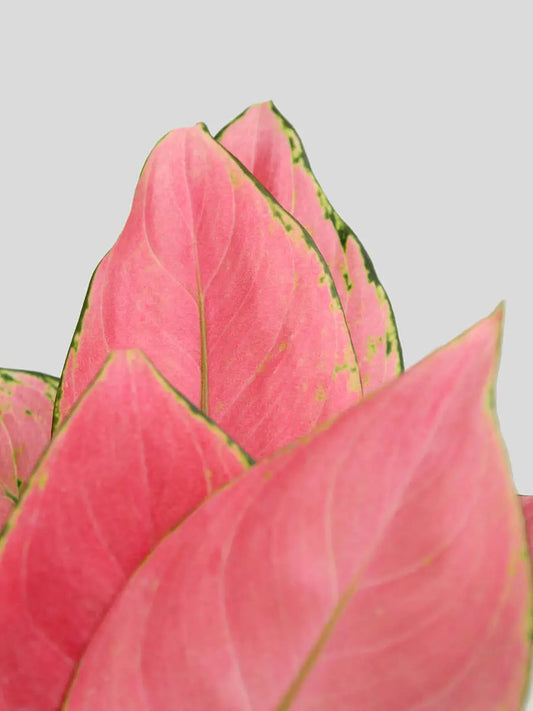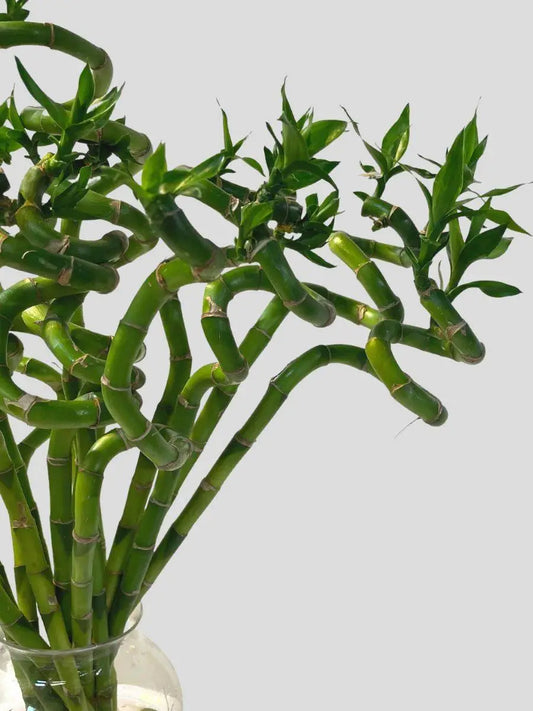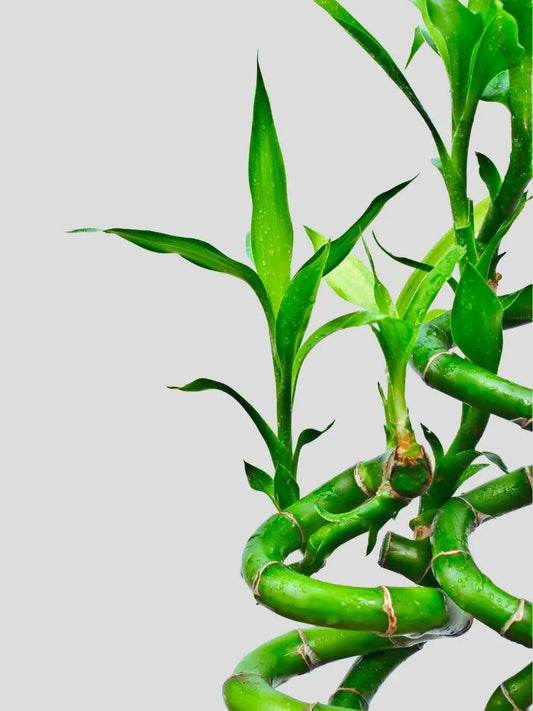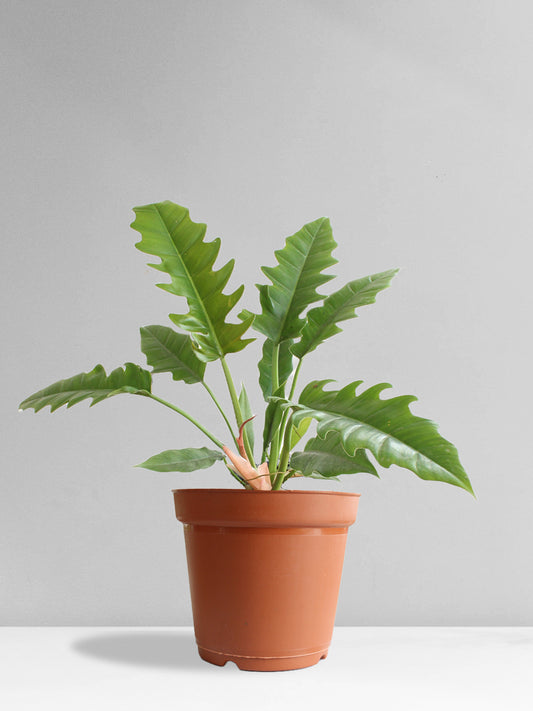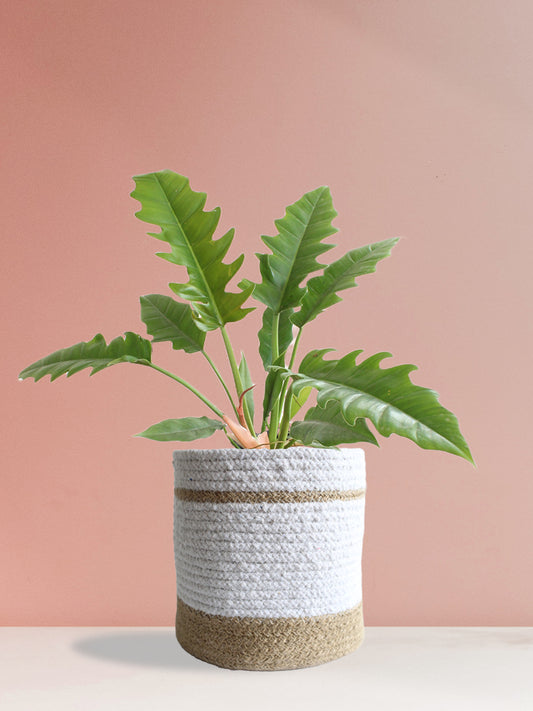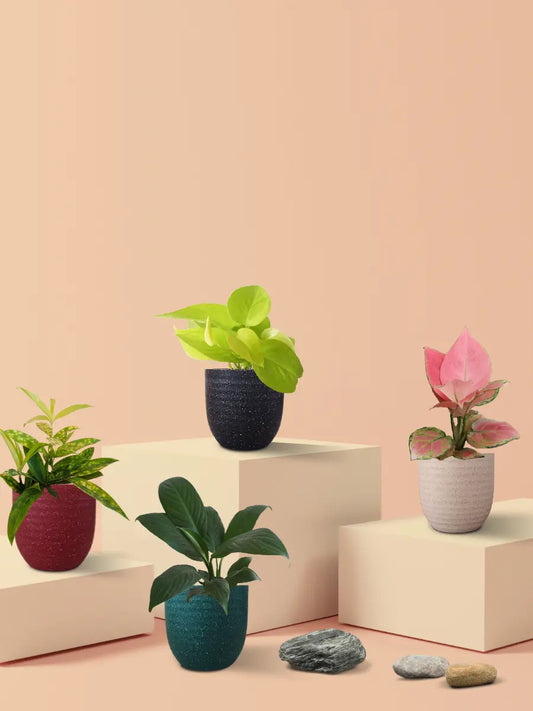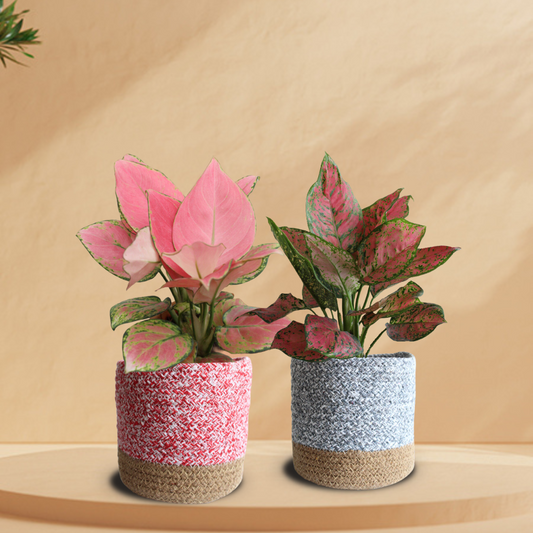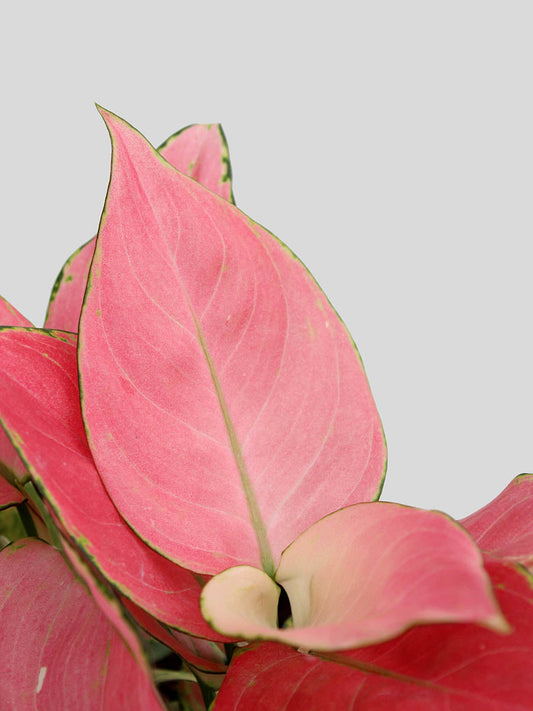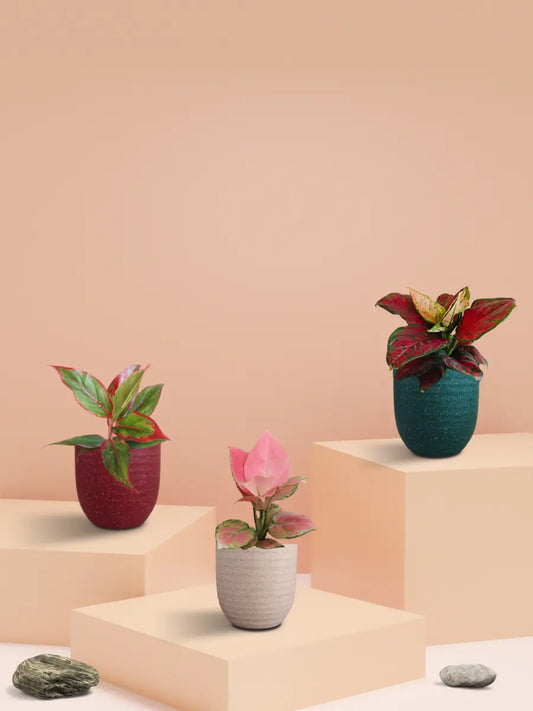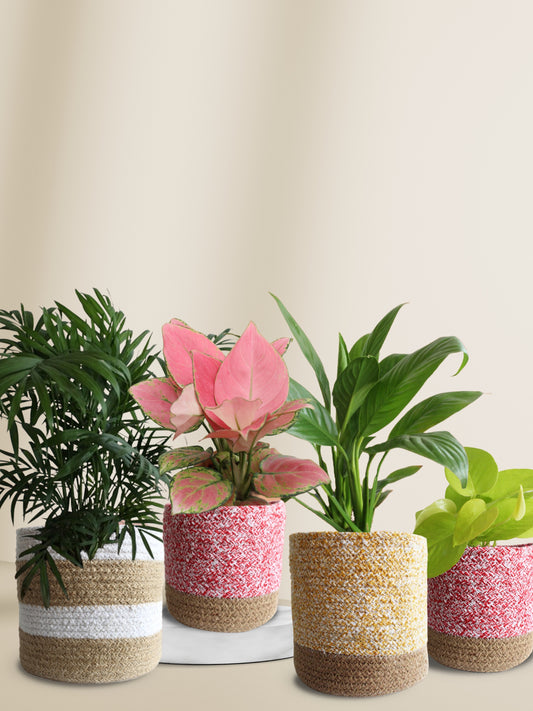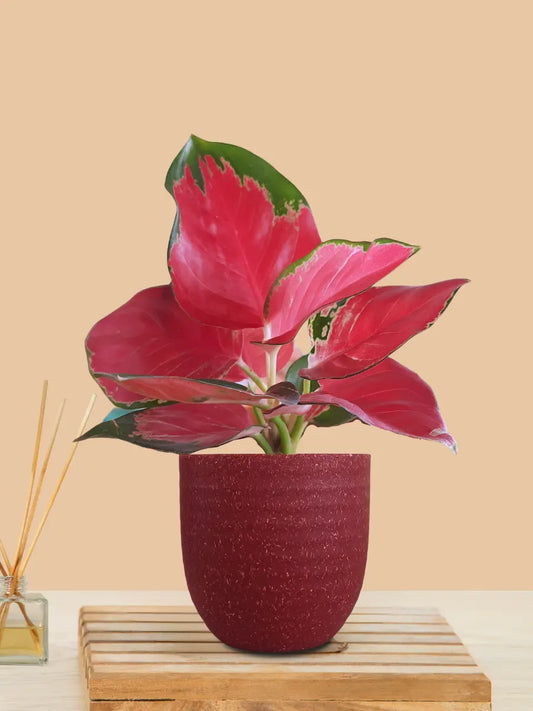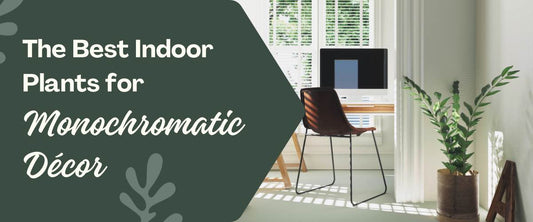How to Care for Houseplants for Beginners
Houseplants have the amazing ability to bring life, color, & a touch of nature into our indoor spaces. No matter how much someone knows about plants or how new they are to the world of plants, taking care of houseplants can be both satisfying & relaxing. However, beginners may find the task of caring for plants to be quite challenging. Don't be nervous.
Greenkin is here to guide you through the basics of caring for houseplants to maximize their growth & beauty in household settings.
How to care for indoor plants: An Introduction

Indoor plants have different demands than outside plants due to their regulated environment. For water, light, & food, houseplants are totally dependent on you. Before getting into the finer points of caring for indoor plants, it's essential to comprehend a few basic concepts:
[product=aglaonema-pink-anjamani-medium]
Buy our best selling, stunning aglaonema anjamani plant. It instantly adds a vibrant and eye-catching element to your space while demanding the most minimal of attention. This a perfect plant choice for beginners.
[/product]
Light:
Plant development is very dependent on light. Plants have diverse light preferences, ranging from low light conditions to intense, indirect light. Therefore, you should put your plants in spots that will provide them with the right amount of light. For example, keep the plant out of direct sunshine or in a well-lit room with ample light.
The green leaves are gigantic solar panels that strategically collect light, which is essential for plants. Consider your apartment, home, or room's light before buying a plant. Some plants can use fluorescent lights instead of sunlight. Flowering plants & foliage plants require 12-16 hours & 14-16 hours of light daily, respectively.
Watering:
Common mistake: overwatering or underwatering. Too much or too little water may hinder plant development & even damage it. Plants with waxy or leathery leaves don't need as much water as those with lush, thick leaves. Mold on the soil or water at the bottom of the pot indicates overwatering. To know when to water, look for the soil to become drier or crack.
Also, ensure that your pots have drainage holes, & water your plants when the upper top inch of soil appears dry to the touch. Standing water may clog or choke plants, so remove it from the pot.
Remember that depending on the plant species, pot size, & environmental factors, different plants need different amounts of watering.
Watering Temperature:
Water at room temperature is optimal for plants & should be kept at 68° F or 20° C. Too-hot water may harm roots & destroy indoor plants while too cold water might promote dormancy in your plant, limiting its development.
Soil:
Grow your plants in a potting mix that drains properly & is designed for that particular plant. Because a healthy soil environment promotes root rot prevention & water movement.
Humidity:
Many houseplants, particularly tropical ones, fare well at higher humidity levels. For example, if the air in your house is dry, you may enhance the humidity by spraying your plants or setting them on a tray of water & stones.
Fertilization:
Most houseplants thrive on 10-10-10 fertilizers (containing equal proportions of nitrogen, phosphorous, & potassium). Potting soils & fertilizers are the only sources of nutrition for houseplants. Fertilizers also help to improve the texture of the soil, so it can hold water longer & have more beneficial bacteria & fungi living in it. Therefore, you must repot the plant & give nutrients to the soil or it will die.
Also Check This: Breathe Easy: Best Indoor Plants For Oxygen
Growing plants indoors for beginners

Indoor gardening doesn't have to be nerve-racking to get started with. Listed below is a simple, beginner-friendly method:
Finding the Right Plants:
Choose plant species that are well-known for their low maintenance requirements & suitability for beginner gardeners. If you're just getting started with indoor gardening, some of the best easy-to-care-for plants, to start with include spider plants, ZZ plant, areca palm, peace lilies & more.
Finding the Right Space:
Take note of how the lighting changes from room to room in your home. This will help ensure plants are placed in their ideal positions.
Find the right pot:
Choose a pot with adequate holes to drain excess water for healthy plant growth. Without drainage, soil saturation may induce root rot. Also, the size of the pot should be enough to support the plant as it grows.
Set up basic gardening tools:
It's smart to invest money in essential tools like a watering can, pruning shears (for cutting or trimming small branches), gloves, loppers, garden fork, spade & h& trowel. This helps with houseplant planting & care.
Scheduling Watering Efficiently:
Establishing a regular watering schedule that meets the needs of your plants is essential. The goal is to minimize watering frequency & increase soil water absorption, creating drought-tolerant plants with deeper roots. In all things, consistency is king.
Continuous tracking & adjustment are needed to improve performance & make any necessary changes. Regular plant checks can show if the plants are getting too much or too little water or if they have pests. Care plans should also be changed as needed.
Also Check This: Easy To Care Low Maintenance Indoor Plants In India
10 Ways to Take Care of Houseplants

Now, let's examine a set of practical tips for promoting the optimal growth & development of plants:
- Healthy plants start with adequate watering: Plants should be sufficiently watered to discharge excess water. As a preventative step against root rot, use empty saucers.
- Adequate Sunlight: Place plants in settings that meet their light demands. If necessary, pots should be rotated at regular intervals to ensure even growth.
- Humidity Control: Maintaining ideal humidity levels using a humidity tray or room humidifier is a good idea for plants that thrive under high humidity.
- Pruning & trimming work: To stimulate new growth, strategically remove dead or yellowing leaves. To promote a thicker growth routine, pinching back leggy growth is a common gardening strategy.
- Fertilization: Your plants need a well-balanced liquid fertilizer throughout spring & summer development. Always adhere to the instructions listed on the fertilizer package.
- Implantation or Repotting: There is a possibility that the plants will encounter root-bound conditions as they mature. At regular intervals of a few years, repot the plants into slightly larger pots with fresh soil.
- Pest Control: Pay attention to pests like mealybugs, spider mites, & aphids. If you observe an infestation, address it immediately with natural or synthetic remedies.
- Grooming: Dust can inhibit the plant's ability to photosynthesize, so wipe the foliage with a moist cloth to remove it.
- Climber aid: Climbing plant aids like pothos benefit from having pegs or trellises installed to provide them with structural support as they grow.
- Avoid moving plants: Relocating your plant causes it to struggle in its new habitat. Repotting, relocating the plant, or other significant changes may upset it. If your plant is happy, don't move it. Keep in mind that drastic changes in temperature or humidity may have negative consequences.
Keep in mind that learning through one's own experiences is an effective method of instruction.
Also Check This: Budget Friendly Plant Decoration Ideas At Home
Conclusion
Grow plants to spread the love. Taking care of plants is a satisfying activity that helps people feel more connected to nature & makes their living space more lively. Knowing your plants' needs & providing proper care can help you gain confidence as a caretaker. If you're interested in improving your life, try your hand at indoor gardening & watch your plants grow to maturity.


